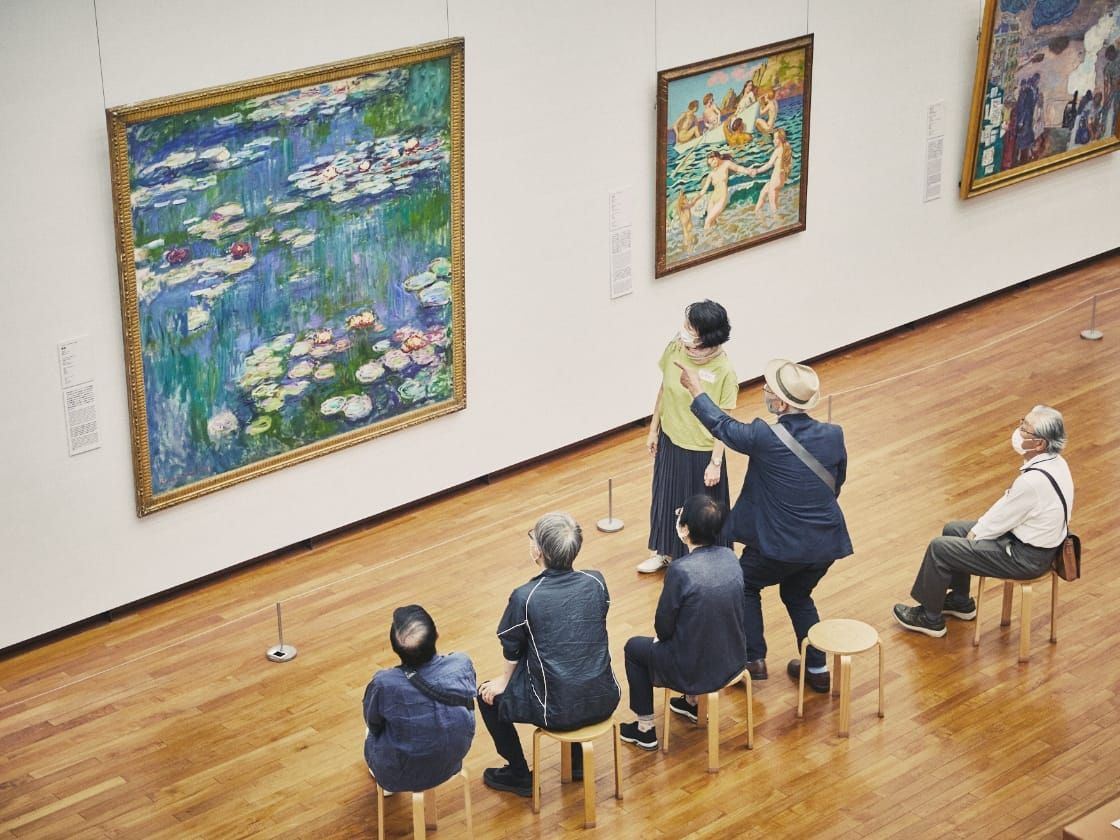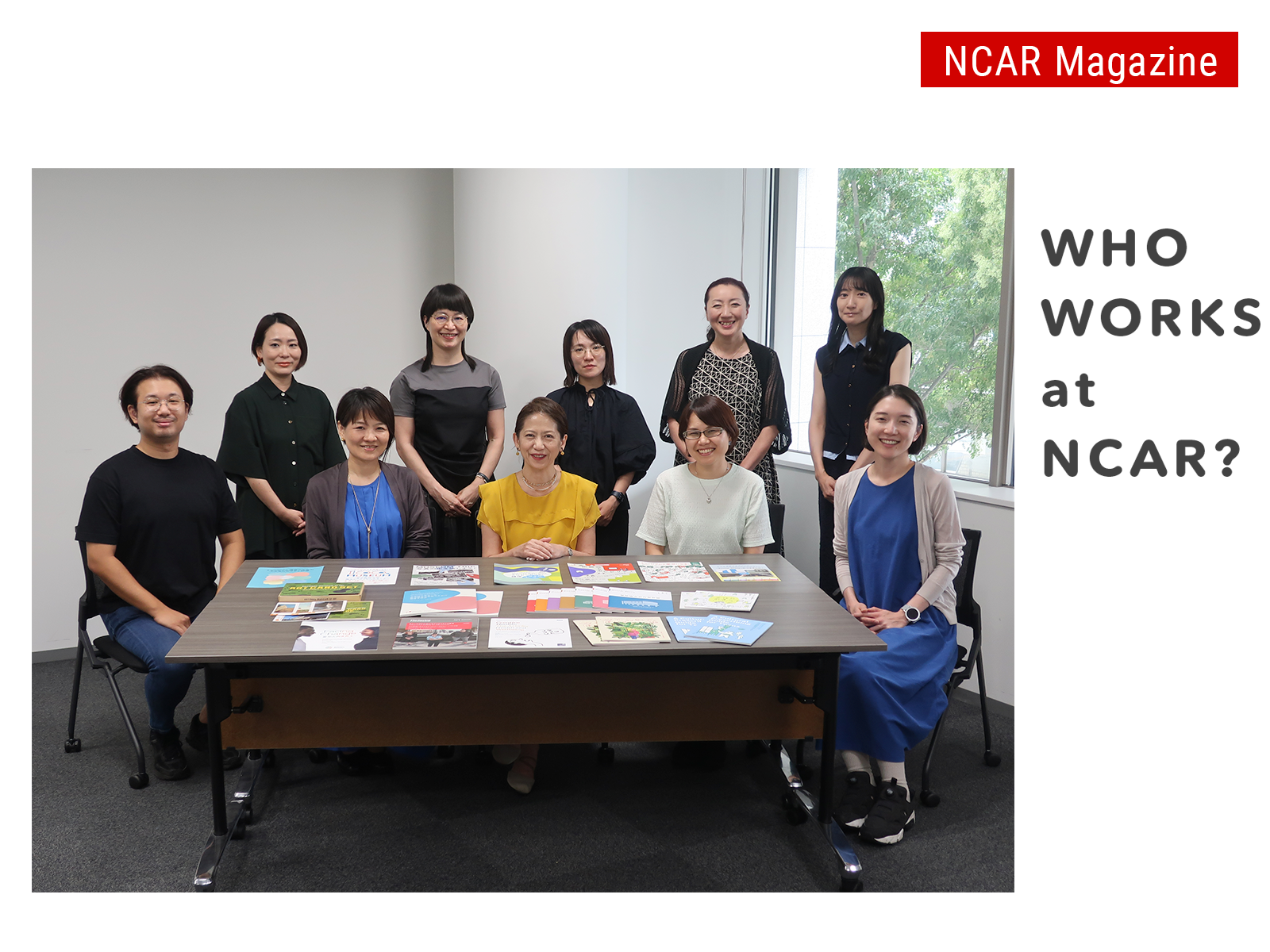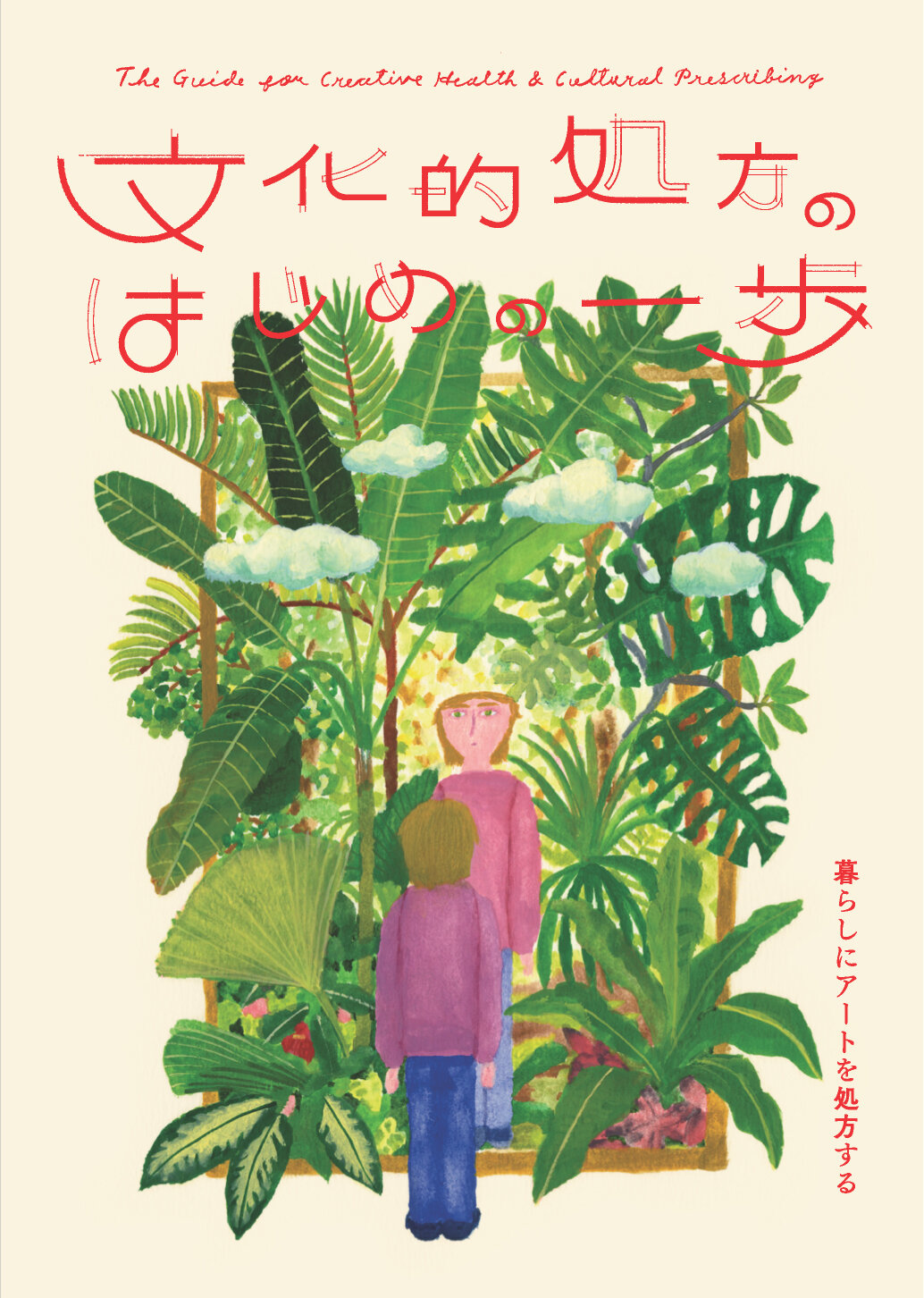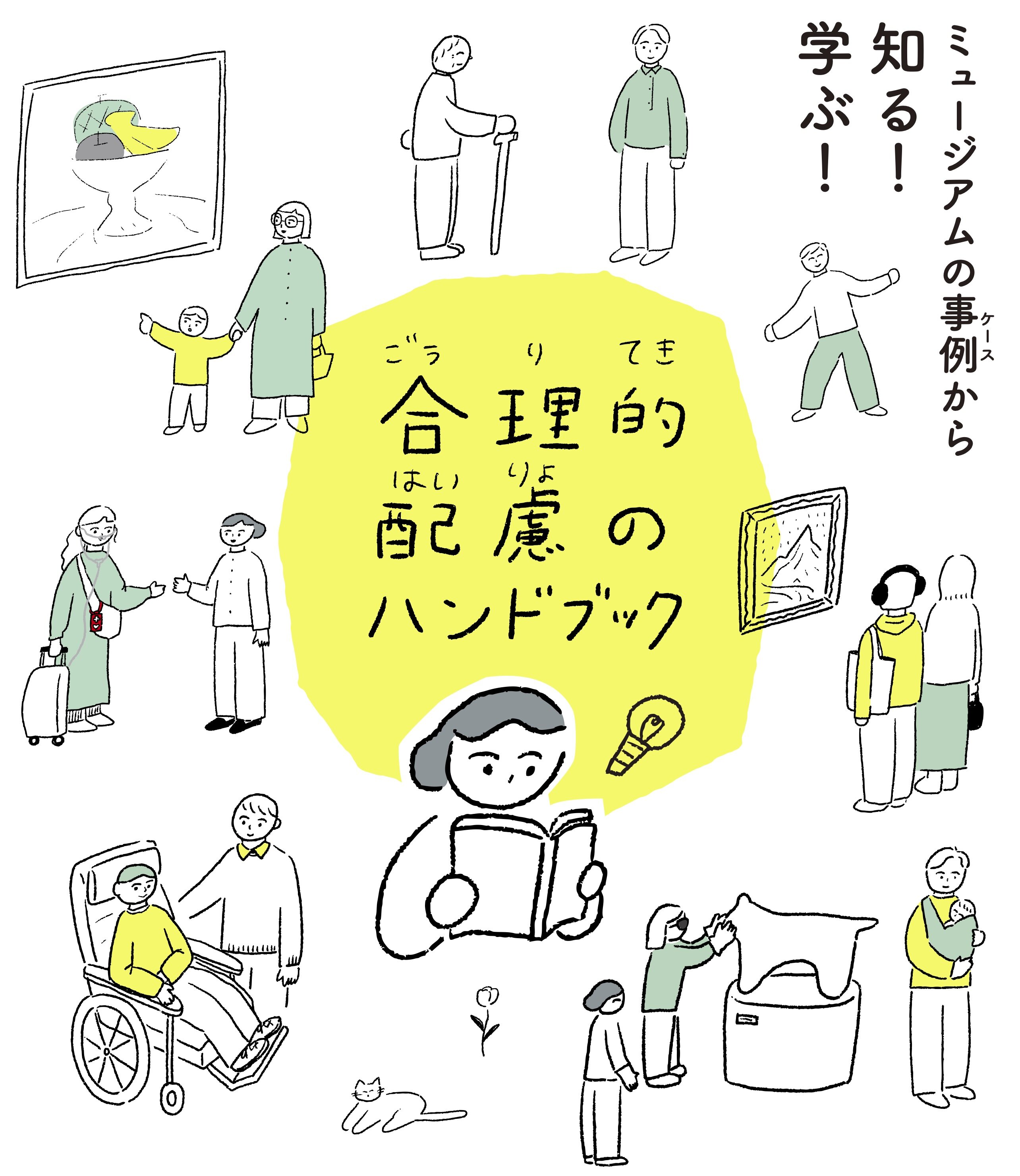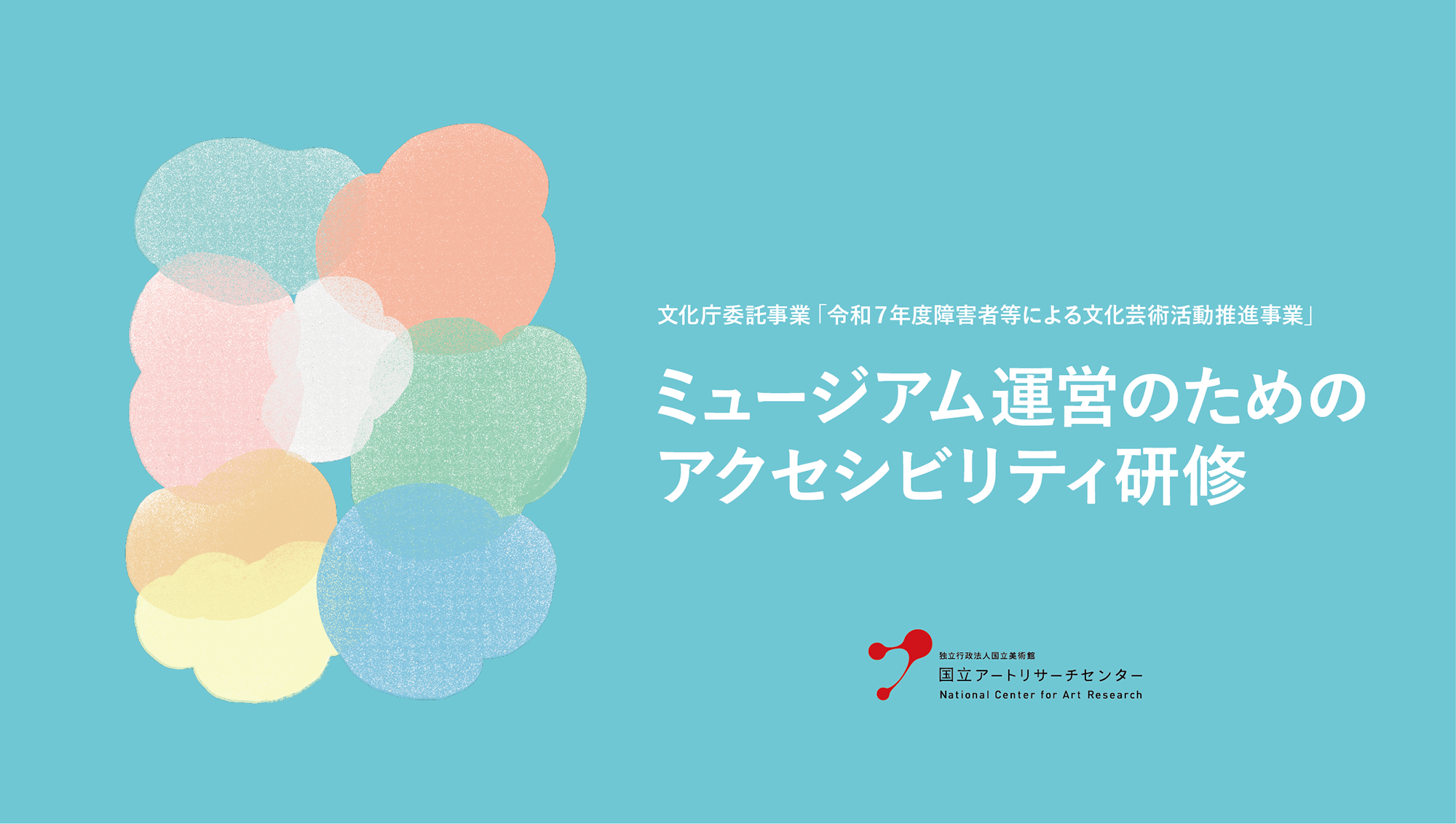In this series, we introduce the people who work at the National Center for Art Research (NCAR). This fifth installment focuses on the Learning Group and its initiatives in furtherance of NCAR’s mission of “Connecting, Deepening, and Expanding Art.”
(Photo, clockwise from lower right: Assistant Researcher Yokoyama Chiho, Curator Suzuki Chikako, Head of Learning Ichijo Akiko, Senior Curator Inaniwa Sawako, Visiting Research Fellow Ito Shunsuke, Specially Appointed Researcher, Tokyo University of the Arts Makino Anri, Assistant Researcher Nakano Uta, Assistant Researcher Hamano Emi, Maruyama Masako, and Assistant Researcher Yonemitsu Kana)
Building bridges between people, things, and events
NCAR pursues a variety of learning programs and D&I (diversity and inclusion) initiatives to ensure that everyone can engage with art through museums—thus discovering new values and possibilities—and have access to cultural experiences.
In recent years, the three core pillars of these efforts, which are “learning resources,” “health and wellbeing,” and “accessibility,” have become increasingly important with respect to the role that museums play within society.
The three people representing the group who were interviewed for this article have overlapping areas of research and expertise, diverse experiences, and are deftly pursuing multiple projects.
From left to right: Inaniwa Sawako, Ichijo Akiko, and Suzuki Chikako.
Head of Learning Ichijo is a researcher at the National Museum of Modern Art, Tokyo and at the Independent Administrative Institution National Museum of Art, which is NCAR's parent organization. In this capacity, she has long been involved in “art museum education,” which connects art museums with society, and she has been a driving force in the field.
Senior Curator Inaniwa has also been involved in numerous collaborative projects, including the Tobira Project at the Tokyo Metropolitan Art Museum, in which art communicators (known as “Tobira”) are recruited from the public, and Museum Start i-Ueno, a learning project that connects nine cultural facilities in Ueno Park. She is currently engaged in research and program development in Japan and abroad, focusing on the relationship between art museums and wellbeing.
Suzuki majored in printmaking as a student, and her interest in creating spaces in society where everyone can feel safe—which sprang from her creative endeavors—led to her current role, which is chiefly disseminating information about reasonable accommodation and accessibility in art museums.
What the various initiatives undertaken by the Learning Group have in common is that they are efforts to build bridges between the people, things, and events around museums, and that they look at how these public facilities should be used within society.
It can also be said that updating the term “education and outreach”—and its associated outdated image—to “learning and engagement” is part of the group’s work, as is raising awareness and improving systems, which currently fall short of international standards. Here, we will examine some specific examples.
Teacher and Curator Training Program marks its twentieth year
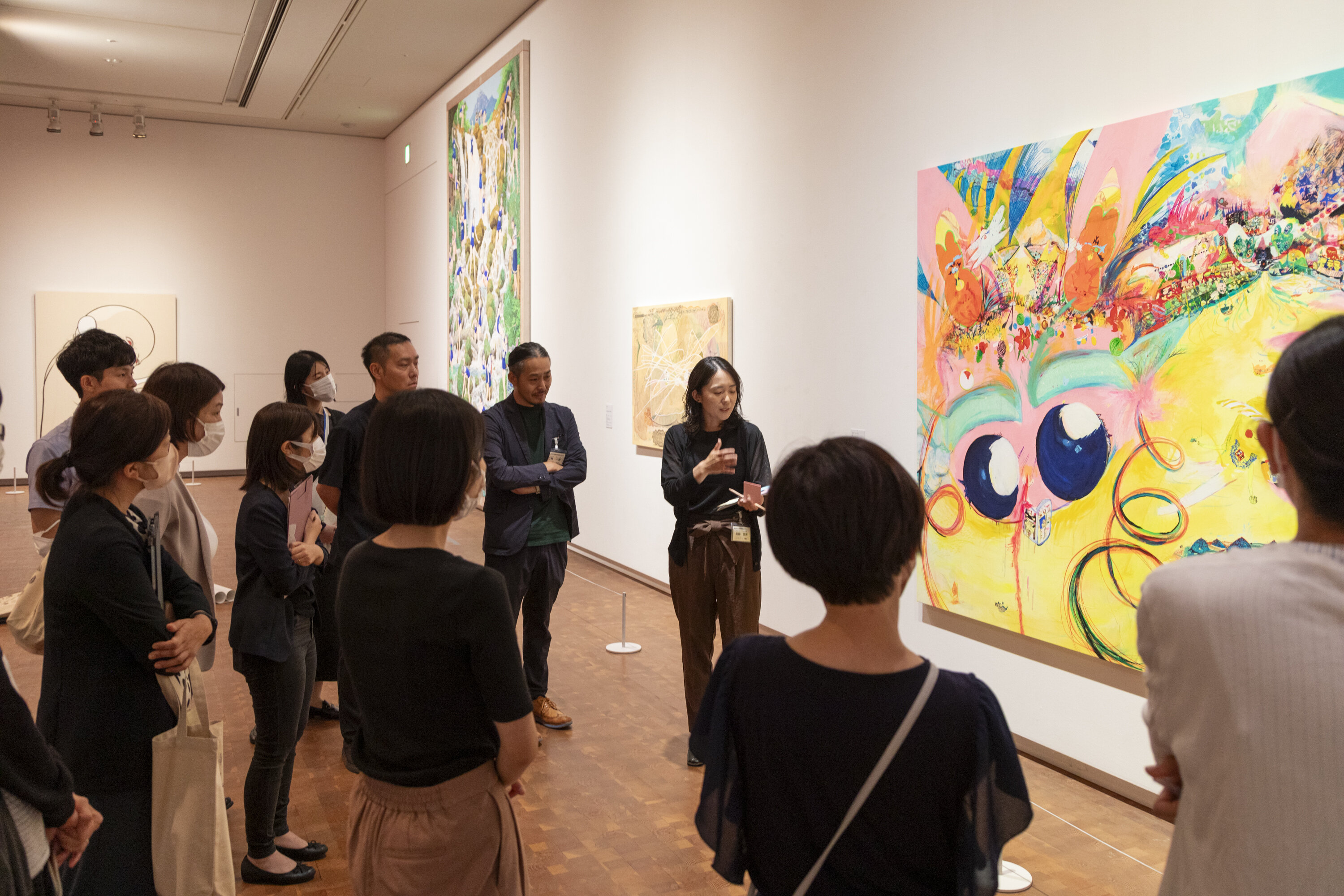
A dialogic art viewing session in the museum gallery as part of training for teachers and curators.
Many groups of elementary and junior high school students visit museums as part of school field trips. In order to promote art museum-based learning in both schools and museums, Leadership Training for Teachers and Curators to Enhance Art Museum-based Learning (Leadership Training/Teacher and Curator Training Program) was launched in 2006.
This training is held over a two-day period every year from late July to early August at national art museums in Tokyo and in the Kansai region. It is offered to art education professionals—including schoolteachers, museum curators, and supervisors—recommended by prefectural boards of education. The program is designed to develop practitioners of art museum-based learning and to encourage collaboration between local schools and museums. It includes group work in which participants experience dialogue-based art viewing sessions in museum galleries, and provides opportunities to learn from practical examples presented by teachers and curators working in the field.
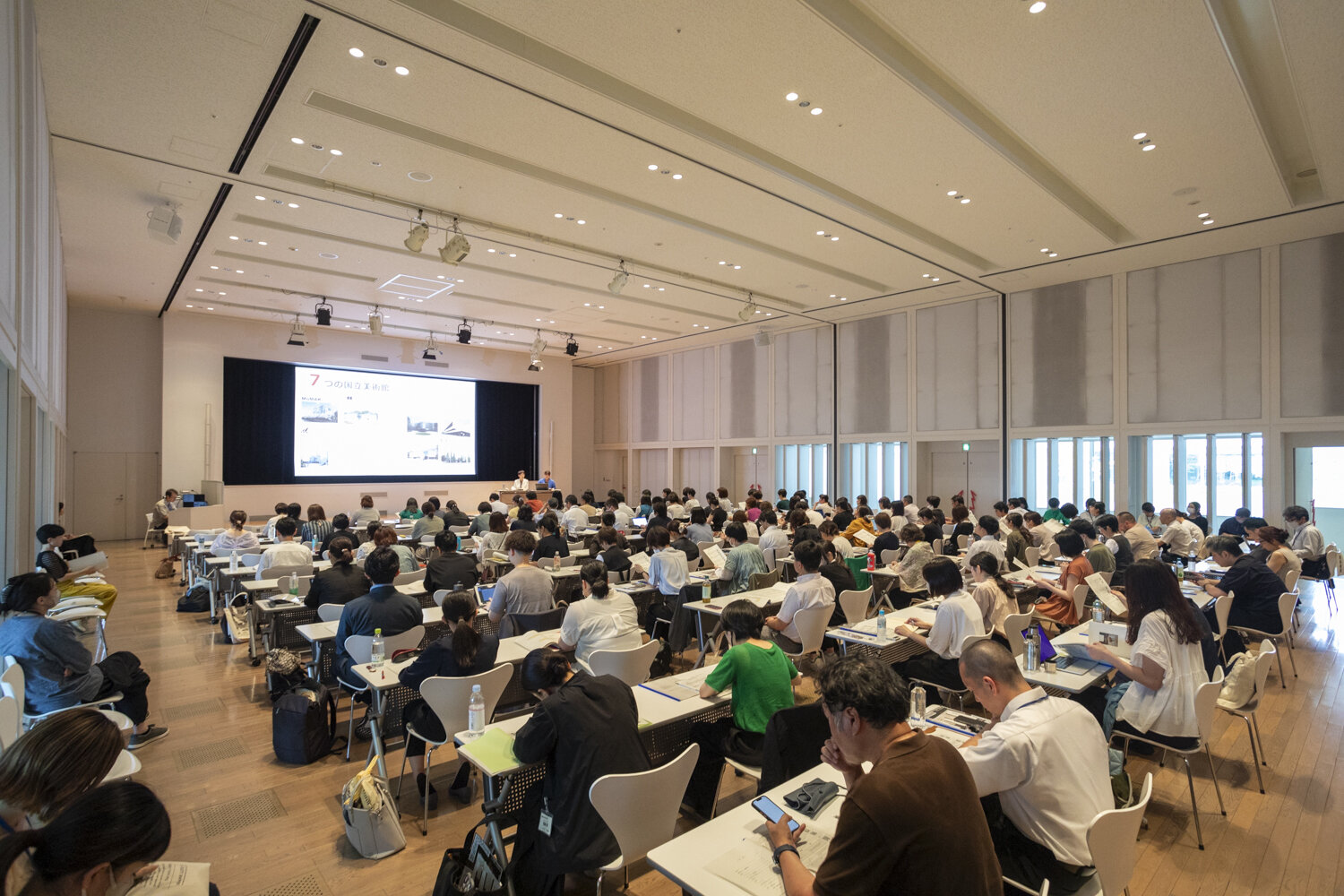
Lecture during Leadership Training
Ichijo has been involved in the program since the very beginning. She says that the key points for Leadership Training are: 1) whether teachers, when designing the overall learning experience, can properly prepare for a museum visit, including why the class is going to the museum and what they can do there; and 2) whether the art museum, after communicating with the school and understanding the educational purpose, can provide a welcoming environment for students and offer appropriate resources including teaching materials.
The year 2025 marks twenty years since Leadership Training began in its current form. However, with the shift to digital in educational settings and the changes in society’s expectations of museums, we are entering a phase in which we are considering new forms of instructor training, with NCAR to act as the hub.
“We are in the process of considering various options to be implemented after the update, such as allowing more people to take parts of the course—such as lectures and case studies—online; and covering ‘wellbeing,’ which is required in school settings and ‘accessibility,’ which makes museums more readily accessible to more people.”
Head of Learning Ichijo Akiko
The Learning Group also offers the National Museum of Art, Art Card Set, as an art education tool separate from visiting a museum, and a website designed to be used in classrooms from elementary school through high school.(https://box.artmuseums.go.jp(Only Japanese version available))
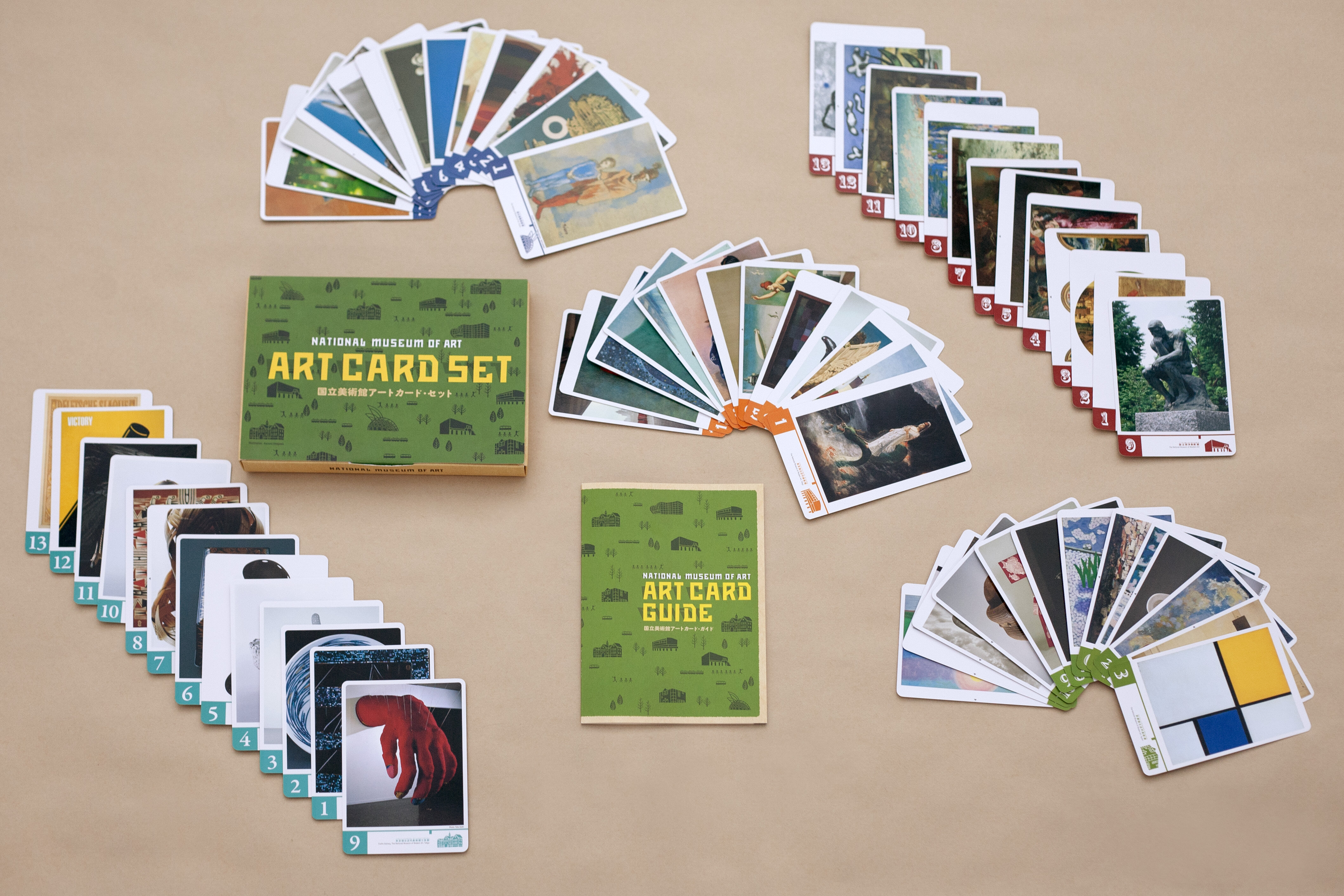
National Museum of Art, Art Card Set
The National Museum of Art, Art Card Set is a set of cards with full color reproductions of sixty-five conversation-inspiring works from collections at the national art museums, along with a guidebook explaining how to use the cards. As a teaching tool that helps develop the ability to see, feel, and communicate artworks, the set is used not only in school classrooms, but also in a variety of settings such as business training sessions.
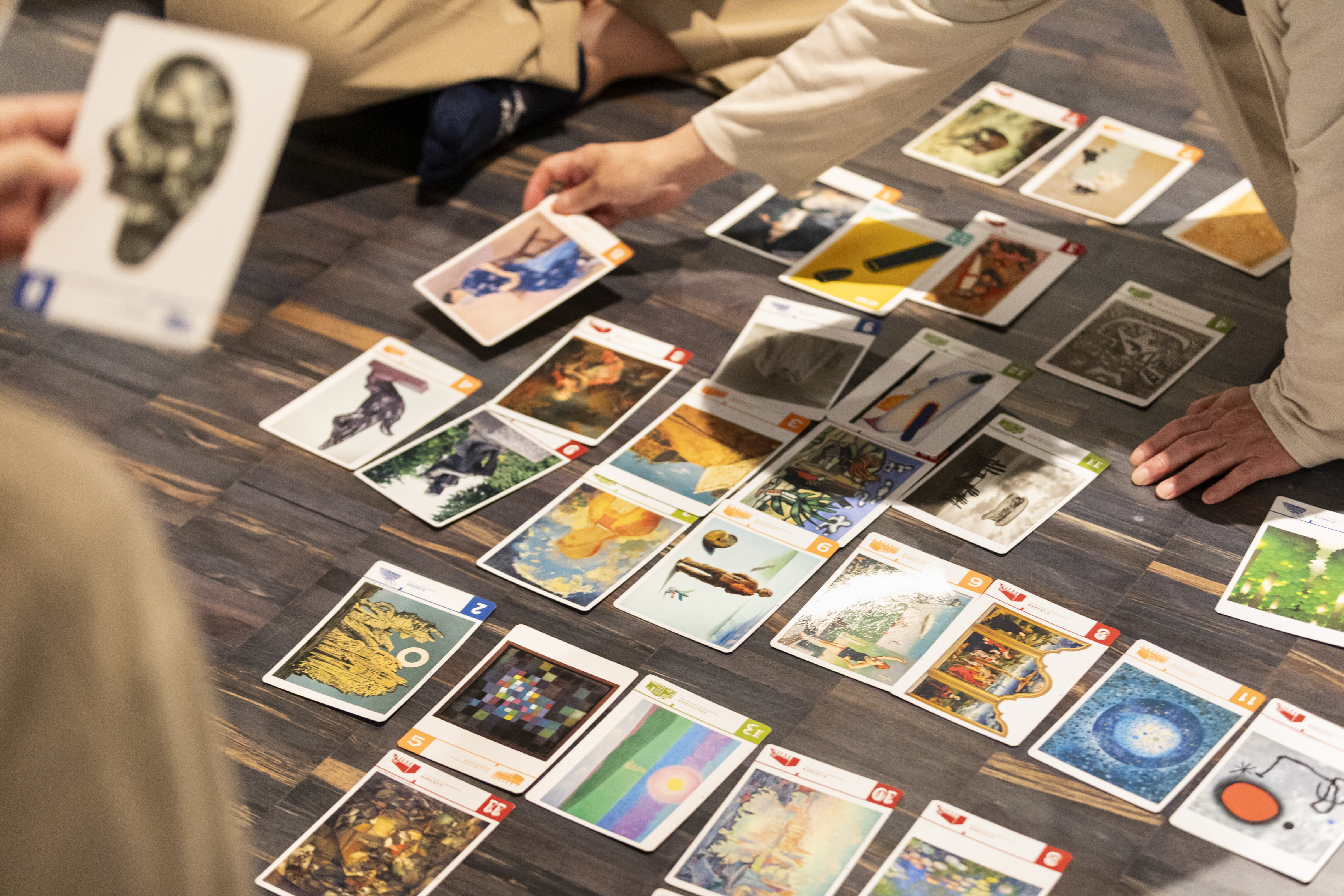
National Museum of Art, Art Card Set
“Cultural prescribing” introduced to the public at Expo 2025
Next, we will look our initiatives related to wellbeing. But before that, what image comes to mind when you hear the term “cultural prescribing?”
The term may be unfamiliar, but is no exaggeration to say that every one of us has experienced “cultural prescribing” at some point in our life. “Cultural prescribing” refers to the practice of reconnecting with the cultures that we encounter every day in all sorts of circumstances so that we can be happy in our lives, and it is closely related to the concept of wellbeing.
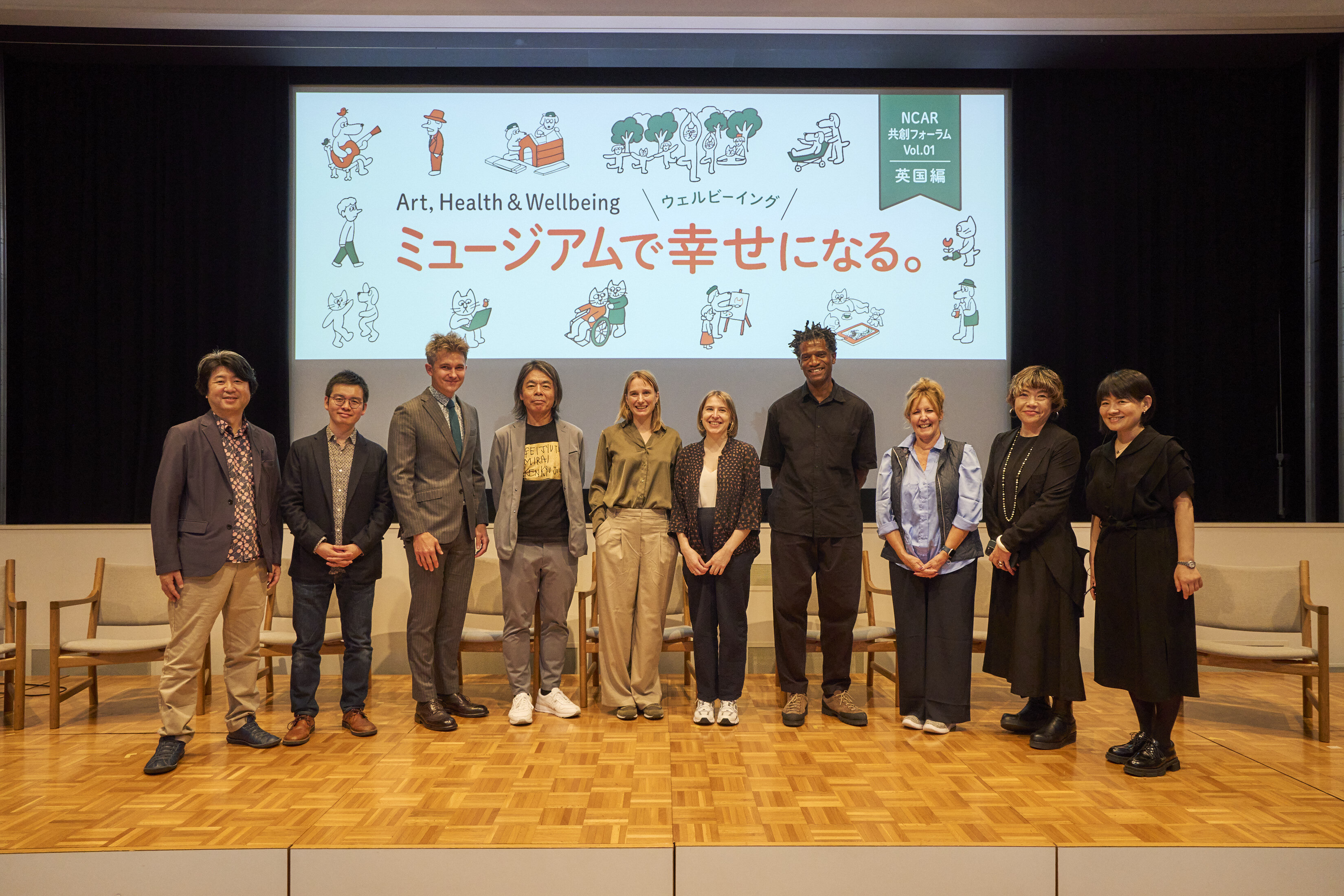
NCAR Creative Forum No. 1: Art, Health & Wellbeing, Enhancing Wellbeing with Museums, Case Studies from the UK (photo: Ryo Fujishima)
NCAR is advancing the Arts-Based Communication Platform for Co-creation to Build a Convivial Society (abbreviated as the “ART-based Platform for Co-creation”), a cultural prescribing research project that began in 2023 at Tokyo University of the Arts. Together with forty-one partners—including universities, art museums, hospitals, social welfare organizations, and local governments—the project is exploring new ways art can support wellbeing and everyday life in our communities.
The latest example of this is the Discover Cultural Prescribing! Hello Future! 100-year Museum exhibition in August 2025 at WASSE (Yumeshima), within the Expo 2025 Osaka–Kansai venue. The exhibition introduced the concept of “cultural prescribing” to a wide range of visitors and offered opportunities to learn about it through hands-on experiences. It was part of the Science: Connecting You to the Future program organized by the Ministry of Education, Culture, Sports, Science and Technology. Although it ran for just six days, Inaniwa, who oversaw the project, recalls that approximately 10,000 people visited the venue each day.
Discover Cultural Prescribing! Hello Future! 100-year Museum(photo: AYAMI)
“This was really one of our first chances to introduce the term ‘cultural prescribing’ to a wider audience. I was surprised by how many people resonated with it. In Japan, the idea that art and culture can support wellbeing hasn’t been very clearly expressed. But for people who already engage with art or cultural activities, it’s something they intuitively know—that these experiences help them connect with others, and feel better in mind and body. On the other hand, for some younger visitors, it felt like a completely new idea—something genuinely eye-opening.”

A Cultural Prescribing Guide for Teens Distributed at the Hello Future! 100-year Museum exhibition at Expo 2025
“At the end of the exhibition, we asked “Tell us about your cultural prescription!” We created a participatory corner where visitors could reflect on their own ideas for cultural prescribing and link an image from their smartphone to display on a Cultural Prescription Shelf, much like writing one’s wish on an ema (votive wooden plaque) at a shrine—gently giving shape to something that feels important inside oneself. Our hope was that this act of looking back at oneself through the lens of culture would leave a small resonance that remains even after returning to everyday life beyond the Expo. Expanding the ways people see and relate to art and culture is, we believe, a very important part of the work of the Learning Group.”
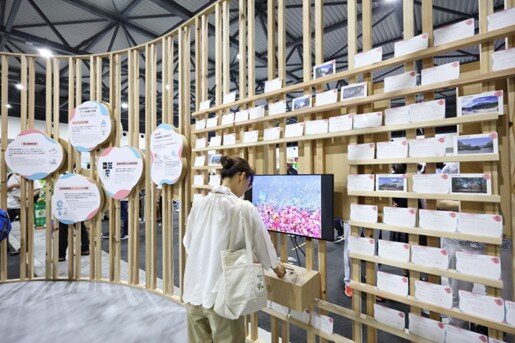
The Cultural Prescription Shelves where people displayed their own cultural prescriptions (photo: AYAMI)
Why is NCAR engaging with “cultural prescribing” and ‟wellbeing” at museums in the first place? Inaniwa explains this as “activities that update our understanding of health by exploring how art and cultural activities support it.”
“Since the 2000s, and especially through the COVID-19 pandemic, scientific research has increasingly shown that mental health and social health have a significant impact on physical health, and this has drawn growing attention. In other words, connection is essential for living a fulfilling life, yet contemporary society faces a growing lack of such connections. In 2018 the UK government appointed the world’s first Minister for Loneliness to address loneliness and social isolation—issues that cannot be resolved through medical care alone. Japan followed in 2021 by appointing its own Minister of State for Measures Against Loneliness and Isolation, and establishing an office within the Cabinet Secretariat. In April 2024 the government enacted the Act on Promotion of Policy for Loneliness and Isolation.
Senior Curator Inaniwa Sawako
Social connections are crucial for creating a society in which people can live healthy lives—physically, mentally, and socially—throughout a long lifespan, even living healthily for a hundred years. Research has also shown that social connections have an effect on longevity. Expanding such connections through art and culture has been a major topic of international discussion since the 2000s, with many examples shared across borders.
Everyone wants to be healthy and to enjoy wellbeing, so this is a topic that continues to attract strong interest. We believe it is important to deepen the understanding that experiences of art and culture can support health, by pursuing research and practical implementation with researchers at national universities and public institutions.
Everyone should know about and practice “reasonable accommodation” and “accessibility”
If we want to build the understanding that experiencing art and culture is good for health, it is important that museums are places that are accessible to everyone.
“This is why the Learning Group is working to bring the thinking on accessibility at Japanese museums and our approaches to this up to international standards,” says Suzuki, who is in charge of content creation.
“Until now, each museum has been working on this topic on their own. But with the aim of systematizing and visualizing this as much as possible, and deepening the understanding of “reasonable accommodation” in order to drive behavioral change, in 2023 we published The Handbook of Reasonable Accommodation, Learning from the cases in the Museum.
The handbook presents plenty of examples from museums, and it was designed and edited with the aim of making it easier to understand how to address accessibility in each setting in a flexible way.”
“Reasonable accommodation” refers to changes or adjustments that are necessary and appropriate based on individual circumstances in order to remove social barriers that interfere with the rights of people with disabilities. This concept was codified in the Convention on the Rights of Persons with Disabilities, which was adopted by the United Nations General Assembly in 2006.
In Japan, the Act for Eliminating Discrimination against Persons with Disabilities went into effect in 2013. It was later amended in April 2024, making it mandatory for the national government, public institutions, local governments, and private businesses to provide “reasonable accommodation.”
“We are only halfway there in terms of getting this implemented at museums around the country. To raise awareness that this is a basic matter that all staff need to learn about and address, we produced Museum Accessibility Course Fuka-fuka TV as e-learning video content in 2024.”
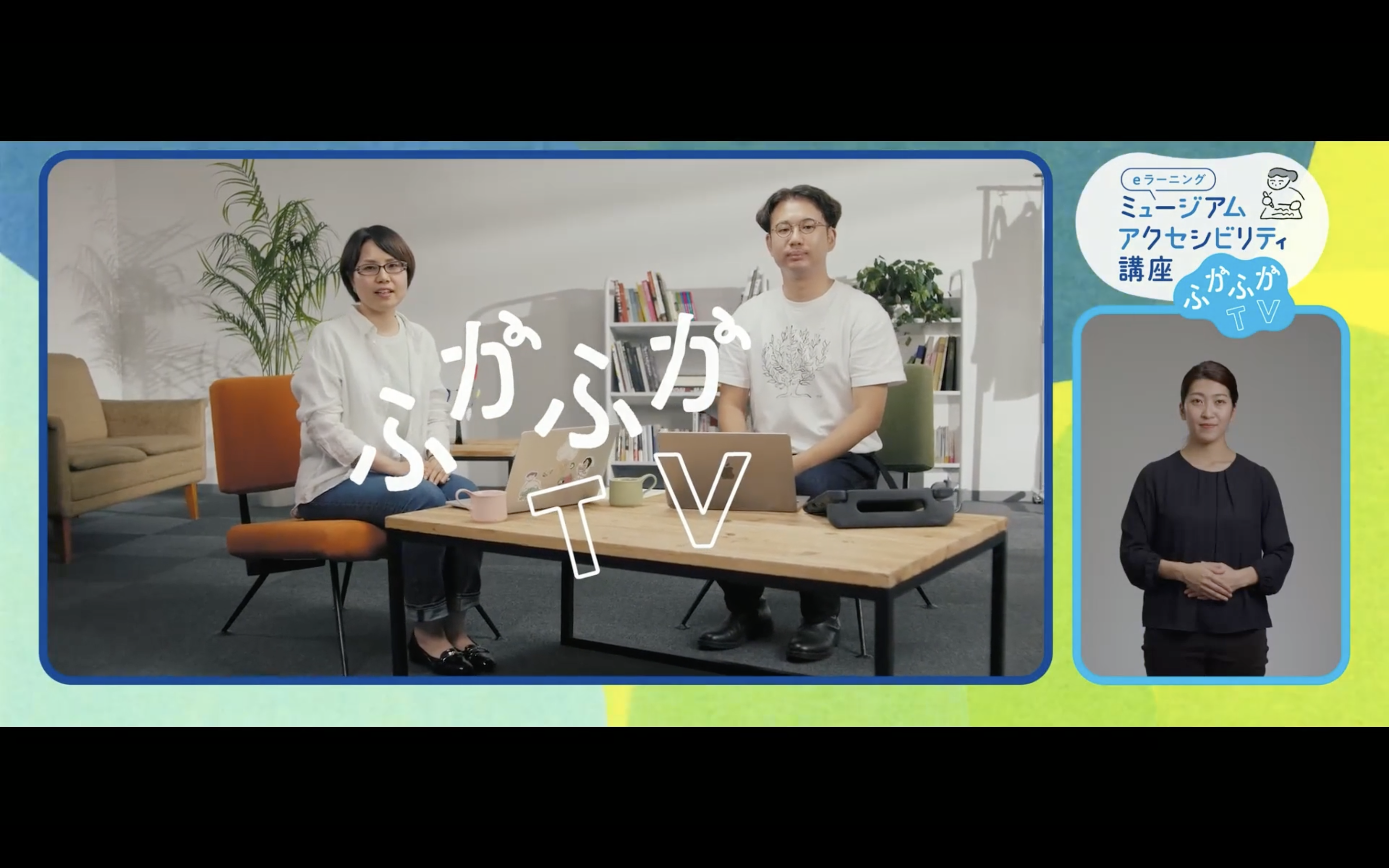
Museum Accessibility Course Fuka-fuka TV
“The seven-part course was open to anyone, not just people involved in museum management, and about 1,500 people participated. Among them were many people who are interested in museums from the perspective of users or in other ways, such as people unaffiliated with museums, people with disabilities, and staff at schools and facilities for people with special needs.
There was a big response to the program, but we also identified some issues. For example, the work tends to be concentrated in the hands of museum staff who are concerned about accessibility issues, and the one-off initiatives don't lead to sustained efforts.”
Therefore, the group put together “Accessibility Training for Museum Management,” which will be offered in three sessions in fiscal 2025. The content of the course is available only to organizations operating museums. For example, a video for museum directors will feature the directors of three museums that opened in different years. The plan is to share content that touches on how the situation at a museum can change depending on the director's awareness.
“For example, in many cases there is only one person at a museum who is working on accessibility as the person in charge. In this training, we want to convey that in order to put accessibility into practice, the museum as a whole must work on it. In due course, we would also like to create opportunities for people to exchange information and learn from each other. These would include initiatives at museums throughout the country and even overseas, as well as initiatives with corporate partners. I hope that all of society comes to think of accessibility as the norm.”
Curator Suzuki Chikako
Suzuki will continue to seek to keep people’s understanding and awareness of accessibility up to date by designing and creating even more comprehensive content.
“I believe that thinking about accessibility is part of designing the museum experience. We think about how we want visitors to be actively engaged and positive, and what kind of feelings we want them to have when they leave. To that end, we think about the experiential process and the spaces for encountering works, and how these should be designed.
On the other hand, it’s also important to think about how to reach people who haven't had the chance to visit museums because museums haven't considered them to be their users.”
Looking at how the initiatives of the Learning Group have changed over time, they should evolve from the conventional idea of “outreach” (reaching users located in remote locations) to “accessibility” (empowering users in remote locations with the “right to participate”), and, going forward, “engagement” (both sides engaging in co-creation).
“Even so, there are probably some people who feel that there are still barriers that keep people in remote locations from speaking up or getting closer. So next I want to design places, including online spaces, where both sides can meet and learn from each other.”
Aiming for a society in which everyone can discover new values and possibilities by enjoying access to cultural experiences
To wrap up the interview, we asked the three when and how they had honed their remarkable skills, and whether they shared anything in common.
According to Ichijo, “The basic principle is to observe the target audience. When we are collaborating with a school, teachers are the key people, and when it comes to school programs, we watch the expressions on the faces of the children. When it comes to accessibility, when we observe the expressions of people with disabilities, they show a variety of emotions, from joy to confusion. So our work begins with observation.” Inaniwa adds, “It has something in common with art appreciation.
Carefully watching the target audience and observing how people engage with a piece is similar to the act of looking at a work of art. The biggest difference is probably that the work of art is a static thing, while people are dynamic. While there are curators with an art history focus who look at the works of art, perhaps our expertise lies in watching to see how visitors engage with the art.”
Looking back, Suzuki says, “During my student days when I was active as an artist, I was creating spaces and venues to exhibit my own work. Through my volunteer work at a museum, I was exposed to the possibilities of designing spaces, and this led me to join the museum. What I learned from my experiences in a museum setting was a big factor.”
Amid the challenges, we hope that you will continue to pay attention to the Learning Group as we track trends inside and outside of Japan and endeavor to distribute information from a broad perspective with the goal of making it possible for everyone to encounter art through our museums and discover new values and possibilities as we strive to make cultural experiences more accessible.
(Interviews, text, and group photos: Naomi)







